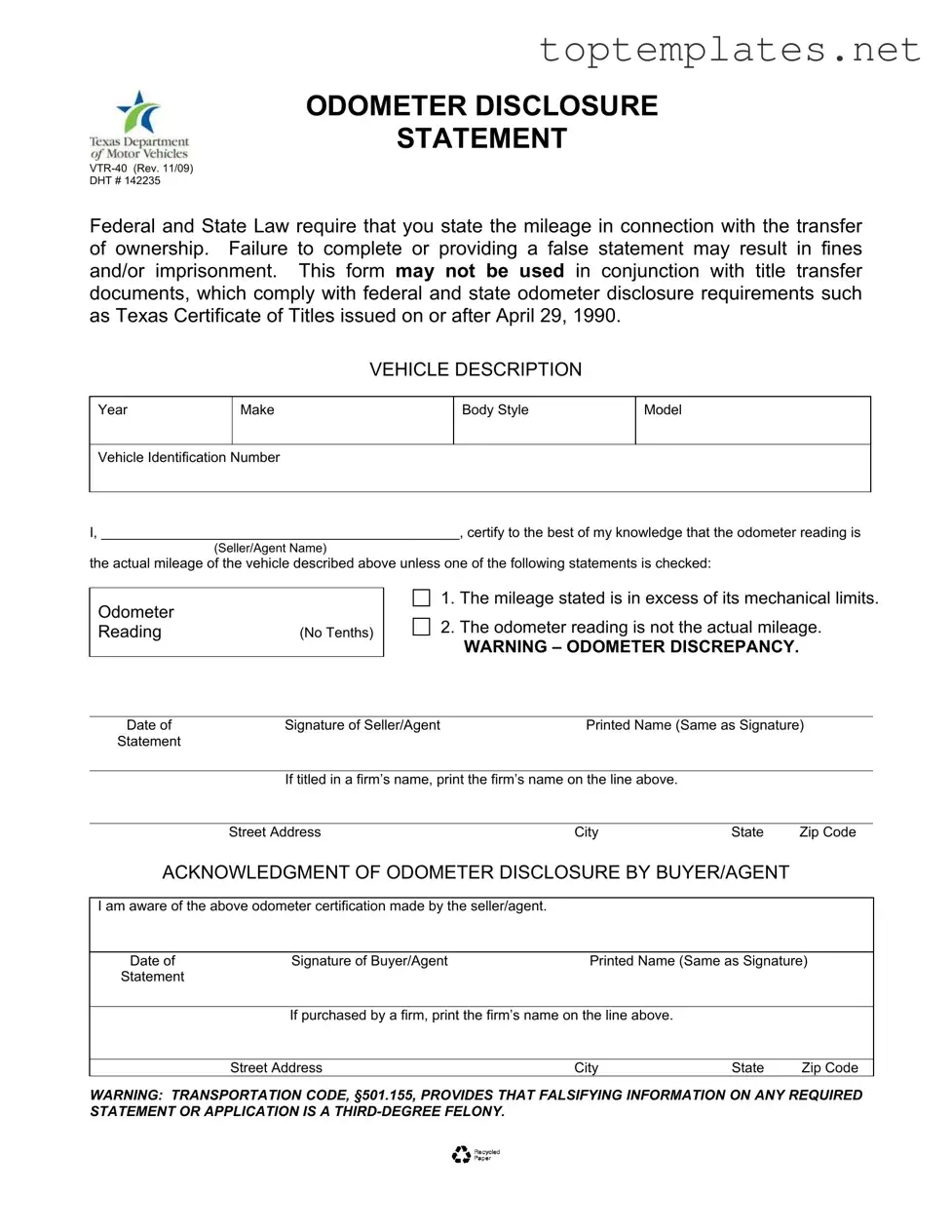What is the purpose of the Texas Odometer Statement form (VTR-40)?
The Texas Odometer Statement form, designated as VTR-40, is intended to record the accurate mileage of a vehicle at the time of its sale or transfer of ownership. Federal and state laws mandate the disclosure of a vehicle's mileage to ensure transparency and prevent fraud during transactions. This form helps in providing a clear record that aids in preserving the integrity of the buying and selling process.
Who needs to complete the Texas Odometer Statement form?
Both the seller or the agent representing the vehicle and the buyer or the buyer's agent are required to complete the Texas Odometer Statement form during the transfer of ownership. It is essential for ensuring that both parties acknowledge the reported odometer reading at the time of sale.
Are there any penalties for not completing the form or providing false information?
Yes, failure to complete the form or providing false information can lead to significant consequences, including fines and/or imprisonment. According to the transportation code, falsifying information on this required statement or application is considered a third-degree felony.
Can this form be used for all vehicle transactions?
No, the form cannot be used in conjunction with title transfer documents that comply with federal and state odometer disclosure requirements for vehicles titled on or after April 29, 1990. It is specifically designed for certain transactions that require a separate odometer disclosure statement.
What should I do if the mileage exceeds the mechanical limits of the odometer?
If the vehicle's mileage exceeds its mechanical limits, there is a specific option on the form that you should check to indicate this situation. This declaration helps in accurately recording the status of the vehicle's mileage for the buyer and any future transactions.
What if the odometer reading is not the actual mileage?
If the odometer reading does not reflect the actual mileage of the vehicle, for reasons such as odometer tampering or malfunction, there is an option on the form to indicate that the odometer discrepancy exists. Choosing this option alerts the buyer to a potential discrepancy in the vehicle's mileage.
Is acknowledgment by the buyer/agent required?
Yes, acknowledgment by the buyer or the buyer's agent is a mandatory part of the Texas Odometer Disclosure statement process. The buyer or agent must be made aware of the odometer certification provided by the seller and indicate their acknowledgment by signing the form. This ensures that the buyer is fully informed about the vehicle's mileage as claimed by the seller.
What information is needed to complete the form?
To complete the form, information required includes the vehicle's year, make, body style, model, and vehicle identification number (VIN). Additionally, the form requires the odometer reading (without tenths), the seller’s and buyer’s printed names and signatures, their respective street addresses, and the dates of the signatures. This comprehensive information ensures clear identification of the vehicle and parties involved in the transaction.

